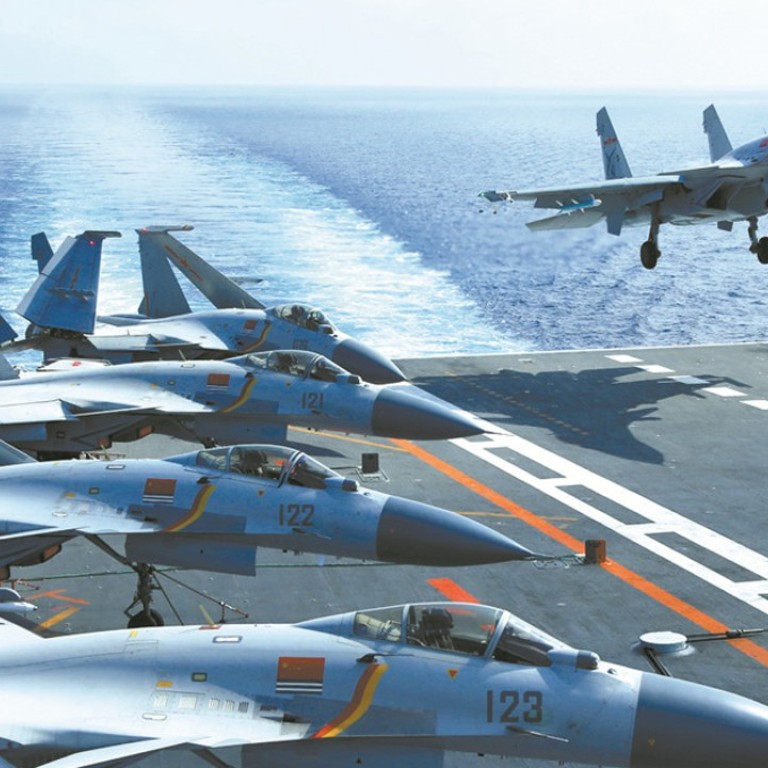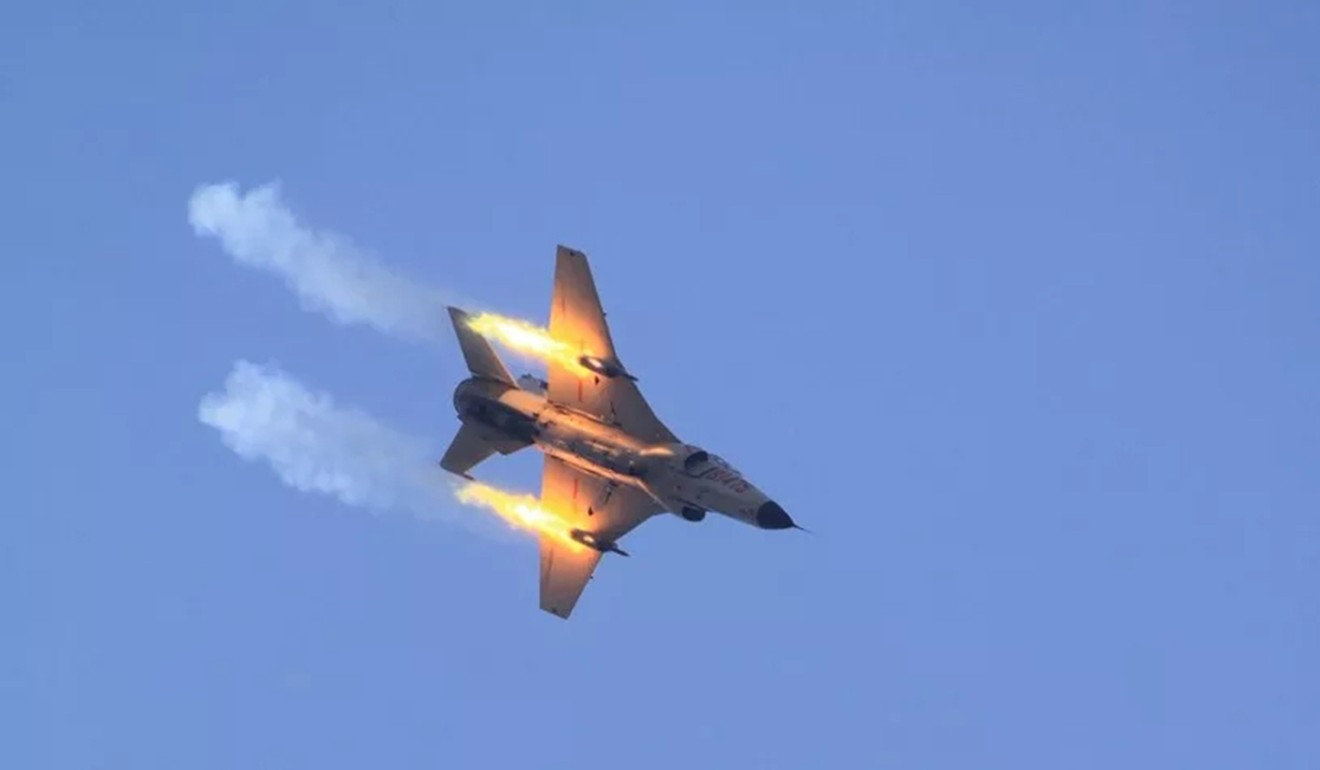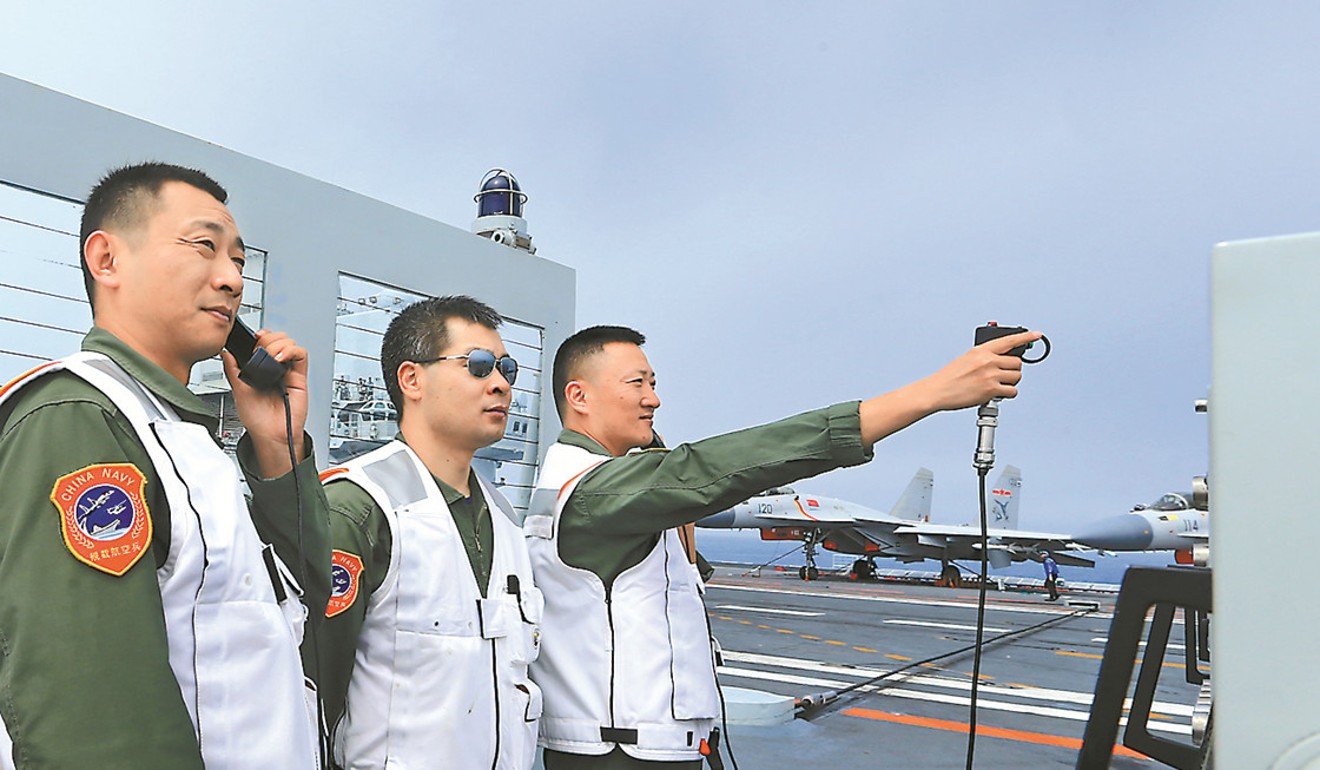
China’s navy begins national search for trainee top-gun pilots
Recruiters are looking for candidates to fly the J-15 fighter jets for its new fleet of aircraft carriers
The Chinese navy has begun a nationwide scouting programme to find trainee pilots as the country looks to increase the combat capacity of its growing fleet of aircraft carriers.
Starting this week, four groups of scouts are travelling through 23 provinces in search of suitable high school seniors graduating next year to join the navy and train as pilots at the Naval Aviation University, state media reported.
One of the main areas this year’s recruitment programme will focus on is the carrier-based J-15 jets to meet the coming needs of the navy, Xinhua reported.
“Some of the recruits will receive top and systematic training as future pilots of the shipboard aircraft,” an officer from the scouting team told Xinhua.
This will be the first time the Chinese navy has directly recruited and trained pilots for the shipboard fighters, the J-15 “Fighter Sharks”. The country’s second aircraft carrier is undergoing sea trials and expected to enter service next year, posing an urgent need for pilots.

In this recruiting season, the navy also greatly expanded the geographical scope of its scouting sweep, from nine provinces last year. Currently J-15 pilots are drawn from air force and navy pilots who have trained on other types of warplanes.
But even these ace pilots must be retrained, especially since the manoeuvres required to take off and land on a carrier are very different to those needed on a ground-based airfield.
Since 2014 the navy has added special enrolment requirements for the pilots of its shipboard aircraft and tracked the development of those trainees, in preparation for the direct training of J-15 pilots, Yin Chenbin, a spokesman for the Naval Pilot Recruitment Office, said.
According to this year’s navy pilot enrolment guide on the website of the Ministry of Defence, 16-to-19-year-old male students with politically reliable personal and family background who have a “strong will” to become pilots are eligible.
It also lists demanding physical, psychological and academic requirements for the pilot trainees; as incentives, it includes offers of free tuition, supply and stipend, family privileges, opportunities to get dual degrees from prestigious universities and “chances of international missions”.

At the moment China has only one aircraft carrier, the Liaoning, in service. It can carry a maximum of 24 single-seat J-15s, its only type of carrier-based fighter, in addition to several helicopters and early-warning planes.
China’s second carrier – the Type 001A, which is designed to accommodate more fighters – is undergoing trials at sea, while construction has reportedly begun on a third carrier.
By the end of 2016, 25 pilots had qualified to fly the J-15, while 12 others were in training.
There have been at least four crashes involving the J-15, though only two of them have been reported by state media.
In one incident pilot Zhang Chao, 29, was killed after a flight control system failed during a training exercise on April 2016. Two weeks later, his colleague, Cao Xianjian, was seriously injured trying to deal with the same problem; it took him more than a year to recover.

